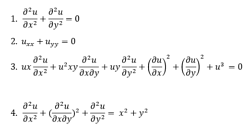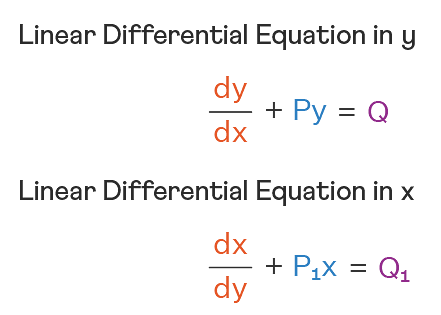The number of functions f, from the set
\(A = {x∈N: x^2-10x+9≤0} \)to the set \(B = {n62:n∈N}\)
such that
\(f(x)≤(x-3)^2+1\), for every \(x∈A,\)
is ______.
The number of functions f, from the set
\(A = {x∈N: x^2-10x+9≤0} \)to the set \(B = {n62:n∈N}\)
such that
\(f(x)≤(x-3)^2+1\), for every \(x∈A,\)
is ______.
Correct Answer: 1440
Solution and Explanation
A = {x∈N, x2-10x+9≤0}
= {1,2,3,...,9}
B = {1,4,9,16,....}
f(x)≤(x-3)2+1
f(1)≤5, f(2)≤2,....f(9)≤37
x = 1 has 2 choices
x = 2 has 1 choice
x = 3 has 1 choice
x = 4 has 1 choice
x = 5 has 2 choices
x = 6 has 3 choices
x = 7 has 4 choices
x = 8 has 5 choices
x = 9 has 6 choices
∴ Total functions = 2 × 1 × 1 × 1 × 2 × 3 × 4 × 5 × 6 = 1440
Top Questions on Functions
- In \( I(m, n) = \int_0^1 x^{m-1} (1-x)^{n-1} \, dx \), where \( m, n > 0 \), then \( I(9, 14) + I(10, 13) \) is:
- The sum of all local minimum values of the function \( f(x) \) as defined below is:
\[ f(x) = \begin{cases} 1 - 2x & \text{if } x < -1, \\[10pt] \frac{1}{3}(7 + 2|x|) & \text{if } -1 \leq x \leq 2, \\[10pt] \frac{11}{18}(x-4)(x-5) & \text{if } x > 2. \end{cases} \] If the domain of the function \( f(x) = \dfrac{1}{\sqrt{10 + 3x - x^2}} + \dfrac{1}{\sqrt{x + |x|}} \) is \( (a, b) \), then \((1 + a)^2 + b^2\) is equal to:
- The area of the region enclosed by the curves \( y = e^x \), \( y = |e^x - 1| \), and the y-axis is:
- The integral \[ 80 \int_0^{\frac{\pi}{4}} \frac{(\sin \theta + \cos \theta)}{(9 + 16 \sin 2\theta)} \, d\theta \] is equal to:
Questions Asked in JEE Main exam
Nature of compounds TeO₂ and TeH₂ is___________ and ______________respectively.
- JEE Main - 2025
- Inorganic chemistry
- Let \( A = [a_{ij}] \) be a matrix of order 3 \(\times\) 3, with \(a_{ij} = (\sqrt{2})^{i+j}\). If the sum of all the elements in the third row of \( A^2 \) is \( \alpha + \beta\sqrt{2} \), where \(\alpha, \beta \in \mathbb{Z}\), then \(\alpha + \beta\) is equal to:
- JEE Main - 2025
- Matrices and Determinants
Consider the following sequence of reactions :

Molar mass of the product formed (A) is ______ g mol\(^{-1}\).- JEE Main - 2025
- Organic Chemistry
The magnitude of heat exchanged by a system for the given cyclic process ABC (as shown in the figure) is (in SI units):

- JEE Main - 2025
- Electric charges and fields
- The value of \( (\sin 70^\circ)(\cot 10^\circ \cot 70^\circ - 1) \) is:
- JEE Main - 2025
- Trigonometric Identities
Concepts Used:
Types of Differential Equations
There are various types of Differential Equation, such as:
Ordinary Differential Equations:
Ordinary Differential Equations is an equation that indicates the relation of having one independent variable x, and one dependent variable y, along with some of its other derivatives.
\(F(\frac{dy}{dt},y,t) = 0\)
Partial Differential Equations:
A partial differential equation is a type, in which the equation carries many unknown variables with their partial derivatives.

Linear Differential Equations:
It is the linear polynomial equation in which derivatives of different variables exist. Linear Partial Differential Equation derivatives are partial and function is dependent on the variable.

Homogeneous Differential Equations:
When the degree of f(x,y) and g(x,y) is the same, it is known to be a homogeneous differential equation.
\(\frac{dy}{dx} = \frac{a_1x + b_1y + c_1}{a_2x + b_2y + c_2}\)
Read More: Differential Equations